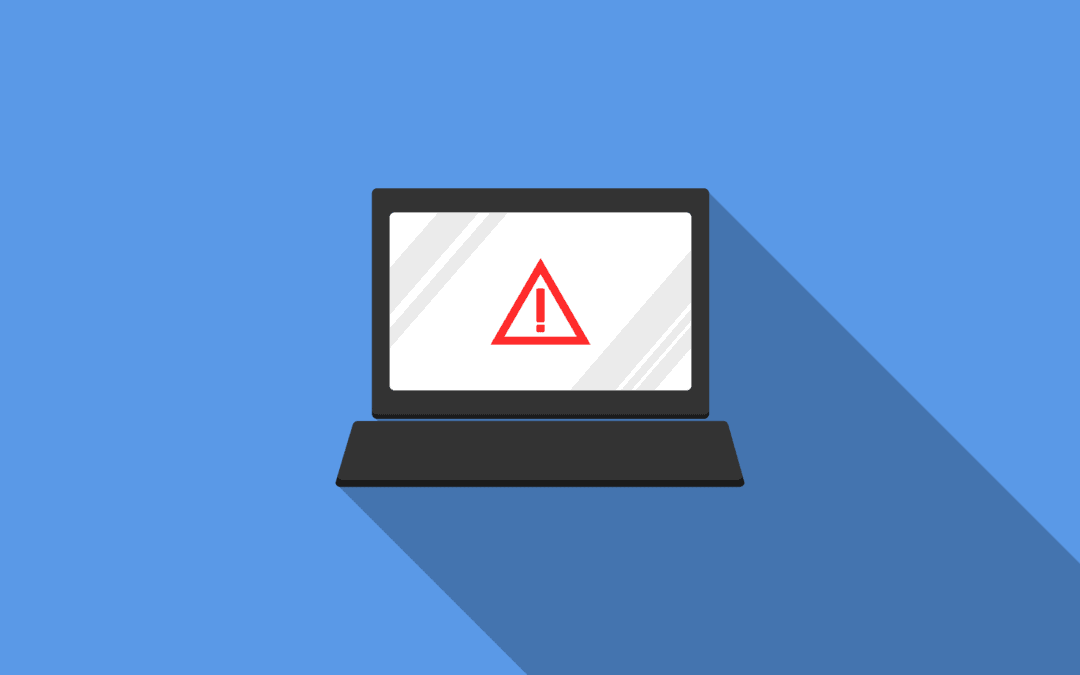It may surprise you that the cybercrime industry will be worth over $10 trillion by 2025. For this reason, it’s crucial that you use vulnerability scanning tools to maximize your business security.
However, not everybody understands the essential information that they need about this topic.
Let’s take a closer look at everything you need to know.
Vulnerability Scanning Tools and Techniques
Cybersecurity professionals use vulnerability scanning tools and techniques to identify, assess, and prioritize the weaknesses present in a system. Generally speaking, vendors of these tools will use various scanning methods.
This includes port scans, banner grabbing, and remote OS detection. It could also involve vulnerability testing of services running on open ports. Of course, it may also involve application version detection and patch-level checking.
Under the right circumstances, vulnerability scanning can help prevent serious issues. Interestingly, many business owners choose to forgo it. To clarify, they often make the mistake of assuming their business is not big enough to target.
Small businesses are some of the most commonly sought-after targets by cyber criminals, though. This is due to the fact that they often have fewer protections in place. They also tend to have fewer resources to handle an attack.
What Is Vulnerability Scanning?
Vulnerability scanning is the process of identifying and assessing a system’s weaknesses. It usually involves automated tools to assess the security posture of devices. It does the same for networks, applications, and systems.
The goal is to detect any known vulnerabilities or misconfigurations. This step allows cyber security professionals to address critical issues.
Left unchecked, hackers would be able to exploit them.
Vulnerability comes in many different forms. It also tends to vary among businesses. For instance, one company might face a handful of security risks when it comes to its email system. Others may have insufficient protections in place regarding how it stores data.
Why Vulnerability Scanning Is Important
For many businesses, vulnerability scans are essential for protecting their information.
This process allows businesses to identify shortcomings in data security. Even a short period of downtime can be catastrophic. In some cases, it could equate to hundreds of thousands of dollars in lost revenue.
Be sure to conduct vulnerability scans in order to prevent this from happening.
Vulnerability Assessments Vs. Vulnerability Scanning
Comparing vulnerability assessments and vulnerability scanning is easier than it seems. Vulnerability scanning is typically a more automated process that looks for known vulnerabilities.
Vulnerability assessment consists of manual system analysis to figure out potential attack vectors. It’s important to note that both of these processes are necessary for proper cybersecurity.
Otherwise, you could miss out on vulnerabilities. This could evolve into a dire situation.
For example, let’s assume that you overlooked an issue with email security. Problems could arise later on that put the reputation of your company in jeopardy.
What Are the Main Features Types of Vulnerability Scanners?
Vulnerability scanners fall into different categories depending on what needs to be scanned and how the scans will be operated.
Application Scanners vs. Network Scanners
As their names imply, application vulnerability scanners are designed to test individual applications while network vulnerability scanners assess vulnerabilities in a network’s infrastructure.
An application scanner will inspect an application’s code, configuration, and behaviors to identify the types of vulnerabilities (e.g., SQL in jections, scross-site scripting, buffer overflow) present as well as their severity, exploitability and location within the application.
Network vulnerability scanners (a.k.a., network security scanners), on the other hand, will focus on network infrastructure devices (e.g., firewalls, routers, switches, etc.) and will look for things such as open ports, misconfigured services, backdoors, etc.
Probe vs. Agent-Based Scanners
Where application and network scanners differ in what they scan, probe and agent-based scanners differ primarily in how they scan for vulnerabilities.
Probe-based scanners are often installed on a central server and can scan a large number of remote systems simultaneously by sending network probes/requests to target systems. Agent-based scanners, on the other hand, are installed on the target systems themselves (not on remote servers) and runs in the background.
Probe-based scanners are better suited to providing high-level insights about network vulnerabilities across multiple systems and require less system resources. Agent-based scanners, however, can provide real-time, detailed information about vulnerabilities on a given system, but are more resource intensive.
Credentialed vs. Non-Credentials Scanners
Another way to categorize vulnerability scanners is whether or not they need special access and authentication credentials on the target system or if they can run as non-credentialed applications.
Generally speaking, probe-based network scanners are can run with a non-credentialed status against a remote network to detect vulnerabilities from external sources, whereas local application scanners require credentialed privileges to operate effectively.
How Vulnerability Scanning Works
In practice, vulnerability scanning involves a series of steps. First, you must define the scope and parameters of the scan.
This means deciding which assets you want to scan, such as websites, databases, or networks. It also involves setting up a schedule for recurring scans.
Next is the configuration phase where you set up your scanner with information about the system you’re scanning. This includes information such as IP addresses and authentication details.
Once the scanner is configured, it will begin to probe the system in order to identify any potential vulnerabilities. The scan results are then compiled into a report, which you can use to analyze and patch any existing vulnerabilities. This report will detail key findings, such as the data that is most at risk.
It’s worth noting that vulnerability scanning has a high rate of success. Very rarely will you encounter issues with vulnerability scans being unable to pinpoint threats.
Internal Vs. External Vulnerability Scans
Internal scans are best for organizations that need to identify and analyze their own security vulnerabilities. External scans can be used by companies that want to assess the security of an outside system. Both types of scans are important for establishing a secure environment.
However, it’s important to note that internal scans should be done more frequently than external ones. This means that organizations need to have a regular schedule for internal scans in order to stay up-to-date with their security posture.
Scan frequency will depend on a number of factors. Larger companies often need to scan more often. After all, it wouldn’t make sense for a small business to run dozens of internal scans each day.
However, it is also contingent upon the type of data you manage. Information like financial data, Social Security numbers, etc. are prime targets for hackers. So, company size is irrelevant if you often deal with this type of information.
Outputs of a Vulnerability Scan
The output of a vulnerability scan is typically a report that outlines any potential vulnerabilities that have been identified.
This report can then be used to prioritize the patching and remediation process. As previously mentioned, some scanners include automated patching capabilities so you can fix any vulnerabilities immediately. It’s important to note that the output of a vulnerability scan is only as good as the information given to it.
Always ensure that your scanner is properly configured with accurate and up-to-date information about your system. A professional can help you get started in this regard. Otherwise, it may be difficult to understand the type of information you need to work with.
When searching for an industry professional, be sure to consider their past reputation. This will allow you to have a grasp of the type of experience you will get. Keep an eye out for how they respond to negative feedback as well.
If they attempt to get aggressive or defensive, it’s in your best interest to search elsewhere.
Costs of Vulnerability Scanning
The total cost of a vulnerability scan will depend on the specific scanner(s) used, the scope and scale of the scan, and external labor costs (assuming it is outsourced). As of the date of this article, $2 per scan per device (or IP) per month could be used as a rough frame of reference.
Vulnerability Scanning Techniques Used by Cyber Security Professionals
In order to get the best results, you need to have a strong understanding of the techniques at play.
This will help ensure that you reach your goals and avoid problems in the future. Some of the most common techniques used by cybersecurity professionals are listed below.
Signature-Based Scanning
This type of scan looks for known vulnerabilities, such as those listed in public databases.
Signature-based scanning is useful for identifying common vulnerabilities and can be used to spot known attack vectors. For example, if a vulnerability has been discovered in a particular type of software, signature-based scanning can be used to identify any systems running that software.
Network Mapping Scanning
This type of scan is used to create an inventory of hosts on a given network. It helps organizations identify devices and their associated vulnerabilities. Network mapping scanning also provides visibility into how systems are connected and what type of traffic is flowing between them.
Network mapping functions by sending out a series of probes and then analyzing the responses it receives. Afterward, the scan results can be used to create a map of the network.
Heuristics
Heuristic scans look for suspicious activity and can help identify previously unknown vulnerabilities. For context, a heuristic scan would examine files for suspicious coding practices, such as code that looks like malware. It could then report any suspicious activity and recommend further investigation.
Methods like this are great for businesses of all sizes. Larger companies often have more points of vulnerability. Smaller businesses tend to have fewer resources to manage vulnerabilities.
This is why heuristic scans are so essential. They can identify potential problems before they become disasters.
Source Code Scanning
As the name implies, source code scanning is a process of scanning the source code to look for any potential vulnerabilities. This type of scan can be used to detect coding errors, improper access control implementations, missing input validation, and more.
Source code scanning is especially useful for organizations that develop their own software solutions as it helps them identify bugs before they become an issue. It also helps organizations quickly identify and fix any vulnerable code before it becomes exploitable.
Additionally, source code scanning can provide insight into the overall security posture of an organization.
The company can then make improvements from there.
Cloud Vulnerability
For cloud-based systems, security professionals may opt to use cloud vulnerability scanning tools. These tools are designed to detect potential vulnerabilities in cloud infrastructure. They can also provide visibility into how the environment is configured and any areas that need improvement.
It can also help organizations identify weak authentication methods.
Misconfigured firewalls and insufficient access control are other issues that it can handle.
Exploit-Based Scanning
This type of scan looks for known exploits or malicious code that are being injected into the system. It can also be used to detect any malicious code that has been installed on the system.
In many cases, this type of scan can be used to identify the attack vector and prevent further issues. Exploit-based scans also evolve over time. This is simply due to the fact that hackers are constantly developing new ways to conduct attacks.
Port Scanning
Port scanning is used to identify open ports on a system, which can give an attacker access to the system. It involves using automated tools to scan a system’s open ports.
One of the primary benefits of port scanning is that it can identify outdated services or software. This can then allow you to patch or update the system in order to protect it from attack.
So, port scanning is a lightweight and effective way to protect your data.
Where to Get Vulnerability Scanning Support
Many security vendors, like Ihloom, offer managed services that can provide vulnerability scanning services. Additionally, there are a variety of free or open-source tools that are available for use.
Whatever you decide, remember that vulnerability scanning tools are essential for any organization that is serious about protecting its systems. For even further protection, security-conscious organizations should also consider active breach protection.
Looking for more information on how we can help? Feel free to get in touch with us today to see what we can do












0 Comments